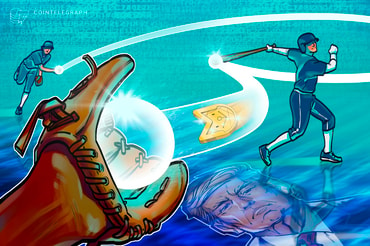How does Ethereum’s DN-404 standard bridge tokens and NFTs?

DN-404 is an experimental Ethereum token standard designed to address the limitations of its predecessor, ERC-404, by enhancing tokenized assets’ efficiency, scalability, and interoperability.
DN-404, short for “Divisible NFT-404,” was developed by blockchain engineers and industry experts to improve the ERC-404 standard. ERC-404 aimed to integrate ERC-20 fungible tokens and ERC-721 NFTs to facilitate the fractionalization of NFTs. However, ERC-404 faced significant challenges, including increased Ethereum transaction fees and limited scalability, which hindered its practical application.
DN-404 leverages innovative consensus mechanisms and smart contract protocols to enhance scalability within decentralized networks by improving transaction throughput and reducing costs. Additionally, the standard incorporates robust governance mechanisms, allowing token holders to participate in decision-making processes, such as protocol upgrades, parameter adjustments, and voting on key proposals. Unlike ERC-404, primarily confined to the Ethereum blockchain, DN-404 facilitates seamless interoperability across multiple blockchain networks, enabling frictionless asset transfers and cross-chain transactions.
DN-404 prioritizes security and transparency through stringent auditing protocols and cryptographic mechanisms, ensuring the integrity and reliability of the token standard. It also introduces standardized tokenomics parameters, simplifying the token creation and management process for developers and ensuring consistency and compatibility across different applications.
The technical implementation of DN-404 involves two distinct contracts: a base ERC-20 token and a mirrored ERC-721 token. This bifurcated approach allows for the efficient management of both fungible and non-fungible assets. Most trading occurs on the base ERC-20 token, representing fractions of the NFTs. When users accumulate a sufficient base token, they automatically receive a corresponding NFT, represented by the mirror ERC-721 token.
The introduction of DN-404 unlocks various possibilities for DeFi, digital asset management, and blockchain-based applications. Potential use cases include tokenizing various assets for seamless trading and liquidity provision on decentralized exchanges, tokenizing real-world assets for fractional ownership and enhanced liquidity, and cross-chain transactions enabling frictionless asset transfers between different blockchain networks.
The Bonsai Token (BONSAI) is an exemplary implementation of the DN-404 standard, designed to function within the Lens Protocol ecosystem. As a hybrid of ERC-20 and ERC-721, DN-404 enables the fractionalization of NFTs, allowing BONSAI to be used as a fungible token and a means to acquire NFTs. Specifically, 100,000 BONSAI tokens can be converted into one BONSAI NFT, facilitating seamless integration of DeFi and social interactions on the Lens platform. This innovative approach allows content creators to monetize their work by setting it as collectible in BONSAI, while users can flip and swap directly on their social feeds. The Bonsai Token also supports community engagement through airdrops and rewards, further enhancing its utility and adoption within the decentralized ecosystem.
Despite its advantages, DN-404 is still experimental and has not undergone formal auditing. Potential adopters are advised to proceed cautiously due to the inherent risks of untested blockchain innovations. Additionally, the DN-404 standard addresses the high transaction costs and inefficiencies observed with ERC-404, but its long-term viability and adoption will depend on continued refinement and community support.
DN-404 represents a significant advancement in the tokenization of digital assets, offering a more efficient and versatile framework compared to its predecessor, ERC-404. By addressing the limitations of ERC-404 and introducing new features, DN-404 has the potential to revolutionize the management and trading of tokenized assets within decentralized ecosystems.
Also known as “Akiba,” Liam is a reporter, editor and podcast producer at CryptoSlate. He believes that decentralized technology has the potential to make widespread positive change.
CryptoSlate is a comprehensive and contextualized source for crypto news, insights, and data. Focusing on Bitcoin, macro, DeFi and AI.
Follow us on X for instant crypto news and insights updates.
Reflecting on how debates from 2015 to 2017 shaped Bitcoin’s future and Ethereum’s governance approach.
Bloomberg Senior ETF Eric Balchunas called an earlier mid-June launch a “long shot.”
Some community members have speculated that the ETH might belong to the bank’s customers.
The Tornado Cash developers have enjoyed strong backing from the crypto community over their issues with the authorities.
Disclaimer: Our writers’ opinions are solely their own and do not reflect the opinion of CryptoSlate. None of the information you read on CryptoSlate should be taken as investment advice, nor does CryptoSlate endorse any project that may be mentioned or linked to in this article. Buying and trading cryptocurrencies should be considered a high-risk activity. Please do your own due diligence before taking any action related to content within this article. Finally, CryptoSlate takes no responsibility should you lose money trading cryptocurrencies.

Published on Other News Site














